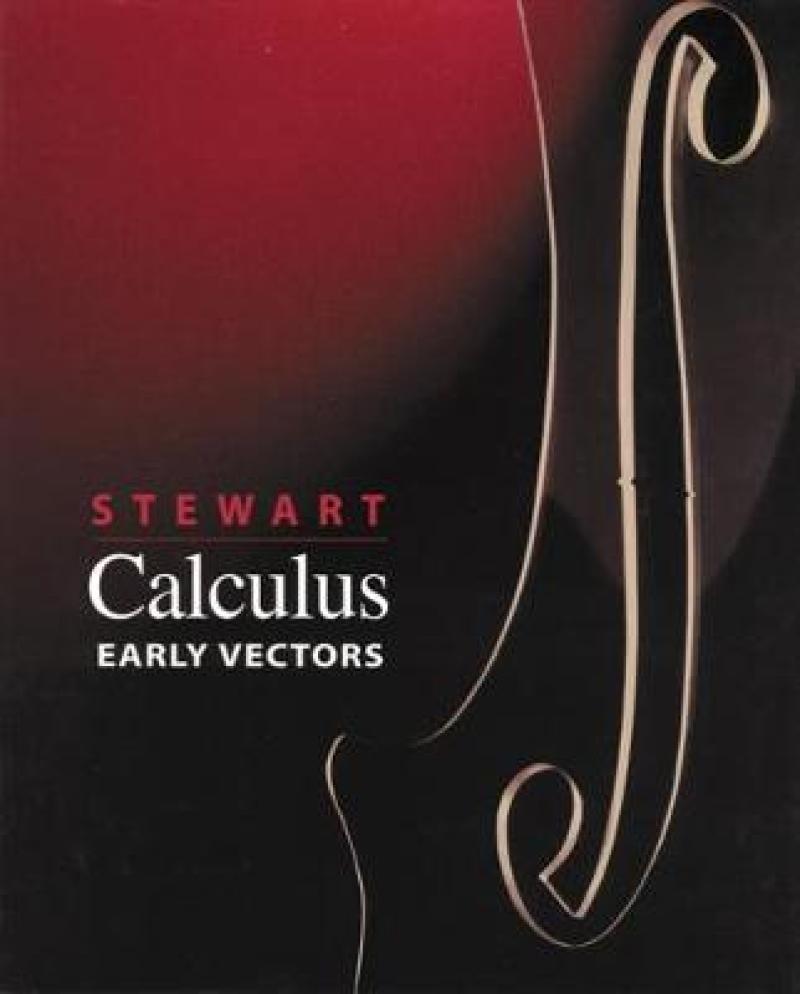REVIEW AND PREVIEW. Functions and Their Graphs. Types of Functions. Shifting and Scaling. Graphing Calculators and Computers. Principles of Problem Solving. A Preview of Calculus. 1. INTRODUCTION TO VECTORS AND VECTOR FUNCTIONS. Vectors. The Dot Product. Vector Functions. Review. 2. LIMITS AND RATES OF CHANGE. The Tangent and Velocity Problems. The Limit of a Function. Calculating Limits Using the Limit Law. The Precise Definition of a Limit. Continuity. Limits at Infinity. Horizontal Asymptotes. Tangents, Velocities, and Other Rates of Change. Review. 3. DERIVATIVES. Derivatives. Differentiation Formulas. Rates of Change in the Natural and Social Sciences. Derivatives of Trigonometric Functions. The Chain Rule. Implicit Differentiation. Derivatives of Vector Functions. Higher Derivatives. Slopes and Tangents of Parametric Curves. Related Rates. Differentials; Linear and Quadratic Approximations. Newton's Method. Review. Problems Plus. 4. INVERSE FUNCTIONS: EXPONENTIAL, LOGARITHMIC, AND INVERSE TRIGONOMETRIC FUNCTIONS. Exponential Functions and Their Derivatives. Inverse Functions. Logarithmic Functions. Derivatives of Logarithmic Functions. Exponential Growth and Decay. Inverse Trigonometric Functions. Hyperbolic Functions. Indeterminate Forms and L'Hospital's Rule. Review. Applications Plus. 5. APPLICATIONS OF DIFFERENTIATION. What does f Say about f?. Maximum and Minimum Values. Derivatives and the Shapes of Curves. Graphing with Calculus and Calculators. Applied Maximum and Minimum Problems. Applications to Economics. Antiderivatives. Review. Problems Plus. 6. INTEGRALS. Sigma Notation. Area. The Definite Integral. The Fundamental Theorem of Calculus. The Substitution Rule. The Logarithm Defined as an Integral. Review. Applications Plus. 7. APPLICATIONS OF INTEGRATION. Areas between Curves. Volume. Volumes by Cylindrical Shells. Work. Average Value of a Function. Review. Problems Plus. 8. TECHNIQUES OF INTEGRATION. Integration by Parts. Trigonometric Integrals. Trigonometric Substitution. Integration of Rational Functions by Partial Fractions. Rationalizing Substitutions. Strategy for Integration. Using Tables of Integrals and Computer Algebra Systems. Approximate Integration. Improper Integrals. Review. Applications Plus. 9. FURTHER APPLICATIONS OF INTEGRATION. Differential Equations. First-Order Linear Equations. Arc Length. Area of Surface of Revolution. Moments and Centers of Mass. Hydrostatic Pressure and Force. Applications to Economics and Biology. Review. Problems Plus. 10. INFINITE SEQUENCES AND SERIES. Sequences. Series. The Integral Test and Comparison Tests. Other Convergence Tests. Power Series. Representation of Functions as Power Series. Taylor and Maclaurin Series. The Binomial Series. Writing Project: How Newton Discovered the Binomial Series. Applications of Taylor Polynomials. Review. Applications Plus. 11. THREE-DIMENSIONAL ANALYTIC GEOMETRY AND VECTORS. Three-Dimensional Coordinate Systems. Vectors and the Dot Product in Three Dimension. The Cross Product. Equations of Lines and Planes. Quadric Surfaces. Vector Functions and Space Curves. Arc Length and Curvature. Motion in Space. Review. Applications Plus. 12. PARTIAL DERIVATIVES. Functions of Several Variables. Limits and Continuity. Partial Derivatives. Tangent Planes and Differentials. The Chain Rule. Directional Derivatives and the Gradient Vector. Maximum and Minimum Values. Lagrange Multipliers. Review. Problems Plus. 13. MULTIPLE INTEGRALS. Double Integrals over Rectangles. Iterated Integrals. Double Integrals over General Regions. Polar Coordinates. Applications of Double Integrals. Surface Area. Triple Integrals. Cylindrical and Spherical Coordinates. Triple Integrals in Cylindrical and Spherical Coordinates. Change of Variables in Multiple Integrals. Review. Applications Plus. 14. VECTOR CALCULUS. Vector Fields. Line Integrals. The Fundamental Theorem for Line Integrals. Green's Theorem. Curl and Divergence. Parametric Surfaces and their Areas. Surface Integrals. Stoke's Theorem. The Divergence Theorem. Summary. Review. Problems Plus. 15. SECOND-ORDER DIFFERENTIAL EQUATIONS. Second-Order Linear Equations. Nonhomogeneous Linear Equations. Applications of Second-Order Differential Equations. Using Series to Solve Differential Equations. Review. Problems Plus. Appendix A: Numbers, Inequalities, and Absolute Values. Appendix B: Coordinate Geometry and Lines. Appendix C: Graphs of Second-Degree Equations. Appendix D: Trigonometry. Appendix E: Mathematical Induction. Appendix F: Proofs of Theorems. Appendix G: Lies My Calculator and Computer Told Me. Appendix H: Complex Numbers. Appendix I: Conic Sections. Appendix J: Conic Sections in Polar Coordinates. Appendix K: Answers to Odd-Numbered Exercises. Index.
